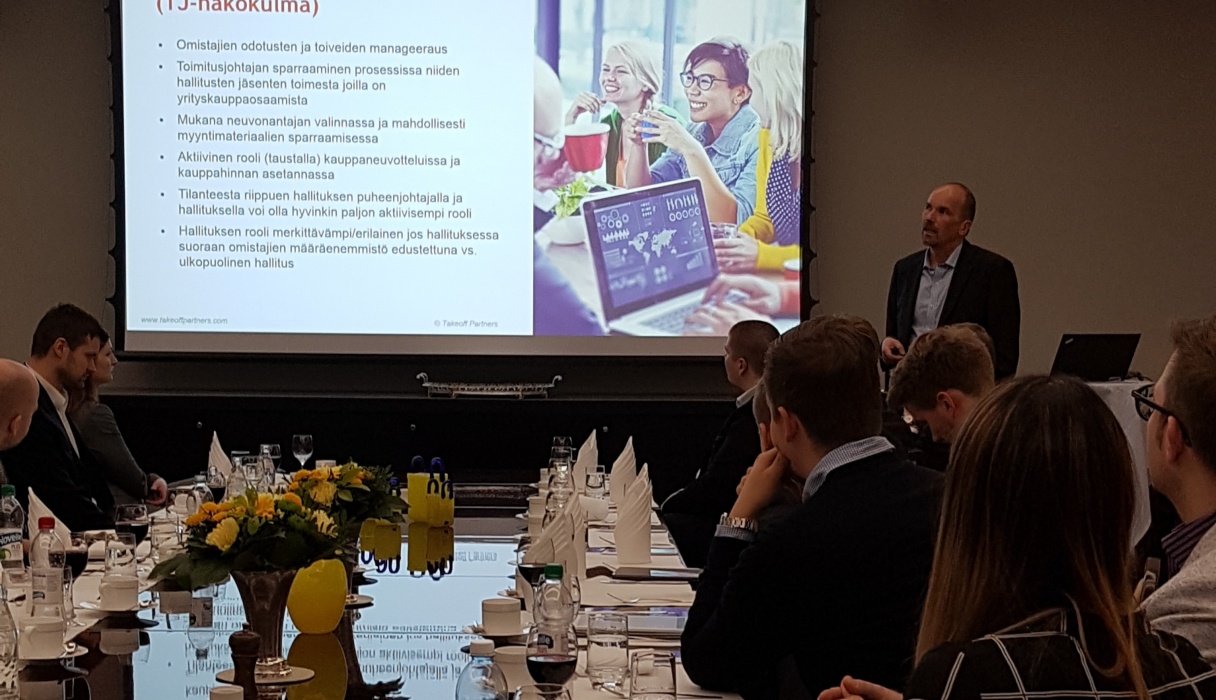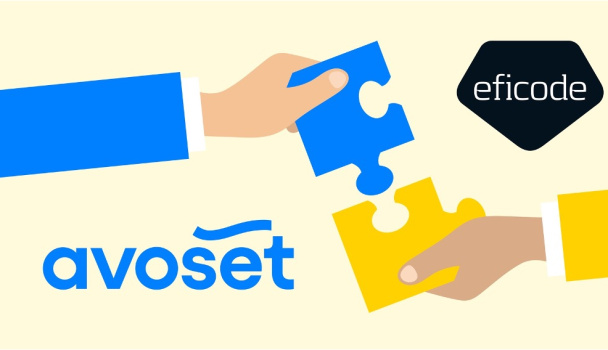How a board of directors prepares for mergers and acquisitions - Future Board meeting

Markko Vaarnas, the Managing Partner of Takeoff Partners, was invited to speak at the Future Board & Nordea partner meeting on April 11th in the old bank hall of Nordea in Helsinki.
The theme for the Future Board meeting was mergers and acquisitions from the perspective of the board of directors. A closer look was taken into what the board should consider when selling or buying a company. The Future Board meeting was opened by Lari Raitavuo, the Executive Director of the Future Board. Lauri Stadigh, the founding partner of Devco Partners, shared insight into the acquisition process with an example case, and Nordea Business Banking Finland’s experts held speeches about how the bank funds mergers and acquisitions.
This article will focus on Markko Vaarnas’ presentation.
Successful EXIT - Case Global Intelligence Alliance
Takeoff Partners’ Markko Vaarnas spoke about the board’s role in EXIT through the case Global Intelligence Alliance (GIA). Global Intelligence Alliance was founded in 1999 and started internationalization in 2002, which successfully materialized into offices in 10 countries and a 15 million euro revenue. Offering Market Intelligence software and services to multinational companies, Global Intelligence Alliance had the US as their largest sales territory. The company was acquired in 2014 by M-Brain with founders, including Markko, exiting shortly after.
“The exit process of GIA that took place in 2012-2014 was educational in many ways”, Markko said and continues by explaining how the process happened in three stages. The first stage happened in 2012 when they tried to sell the company for the first time but did not get lucrative enough offers. As a learning from this first attempt, the company decided to focus on further improving its financials, and, indeed, managed to double its profitability to 15% EBITDA by 2014, while keeping a 10% annual growth rate. After the increase in sales and profitability, it felt like the right time to try to sell the company again in 2014.
In his presentation, Markko highlighted the specific steps in their successful EXIT process. They managed to find a vast number of potential buyers and built a detailed plan on how to approach them. Following the initial discussions, they arranged management presentations with the most interested investors. Even though there was considerable amount of initial interest, the number of actual offers by the deadline was limited to a few as the timing did not prove to be optimal for many of the interested buyers. At this point, Markko’s main aim was to convince the interested suitors, that the company had attracted a lot of interest, as the goal naturally was to raise the selling price as high as possible. During the negotiations, the board of directors were getting slightly nervous as the negotiations went back and forth with the selected buyer. It was all worth the effort in the end as they sold the company for a higher price than anticipated at the beginning of the process.
Markko underlines how crucial it was that they were focused and driven to reach their goal. It required a lot of hard work and persistence to get through the various stages successfully.
Lessons learned from the EXIT
“If you’re ever in this type of situation, be sure to find a very good financial advisor to handle the deal”, Markko advised.
In this case, Markko managed to find a well-connected leader of an investment bank in London, who had vast experience in selling consulting companies. Even though Global Intelligence Alliance wasn’t a straightforward consulting company, it was assessed that consulting companies would be the most likely buyer group for the company. The investment bank handled all the phone calls and emails with the potential buyers, and overall run the process with clear timelines for all parties involved.We also made the choice of getting an advisor who knew how to drive up the value of the company”, states Markko.
Maybe the most important lesson learned is to start planning the exit very much in advance. The best situation for Global Intelligence Alliance would’ve been to start meeting potential buyer candidates several years before selling, in order to have created the right kind of awareness. This way, the company would’ve been in the mergers and acquisitions pipeline of potential buyers to begin with. This starting position would have made the EXIT process a lot easier.
The role of the board of directors in the EXIT process
During the EXIT process of GIA, the board’s role was mainly to oversee the development of the situation. Markko says that the management was pushing the process forward mainly on their own while having discussions with the key owners and board members. The founders and financial investors were all ready to exit from the business. They knew that it would be very difficult to develop the business further without significant long-term investments and the founders especially felt that they would not get personal development opportunities by staying in the market intelligence business for any longer.
In Markko’s view, they made a smart decision in 2003, when they identified the need to back up their internationalization efforts by bringing in external professionals to their board of directors. “We found solid board members who had experience internationalizing professional services companies and a chairman who had more of an all-around international business background and past experience of the chairman role”, Markko says.
The example of GIA is very entrepreneur driven. Markko was the CEO of the company from day one until the final day. Even though he had lost his genuine interest in running the company operations by 2013, it would’ve been difficult to change the leader of the company, while the plans for selling were ongoing and even harder when closing in on the EXIT. So Markko decided to push through, which in the end was rewarding as the EXIT was realized. And he did not need to stick around with the new owner for more than 4 months after the EXIT freeing him up for taking new professional challenges in angel investing and working as a board professional. Overall, the GIA story had a happy ending for the founders & management as well as the financial investors getting their fair share of the financial returns. The new owner M-Brain got an important piece to complement their growth strategy, which they have afterwards complemented with some further acquisitions.






